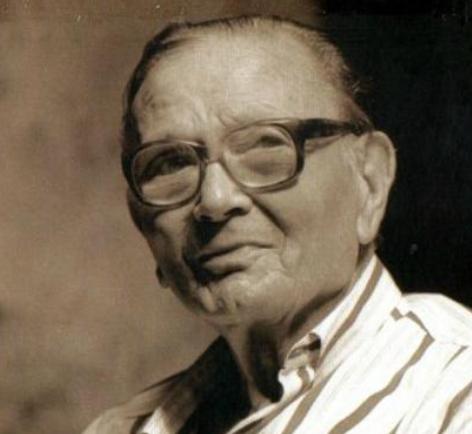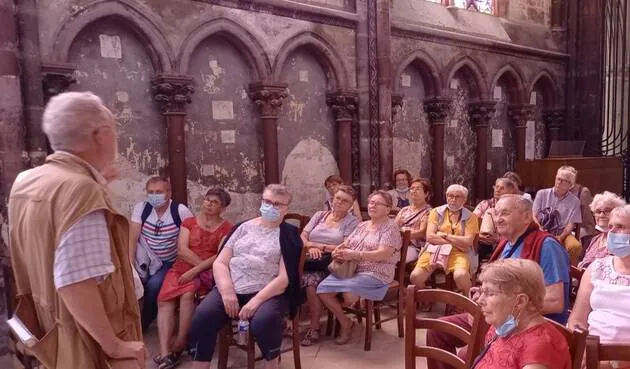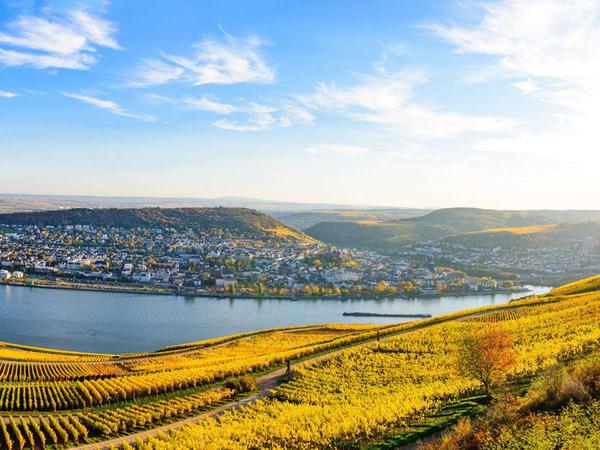Eternal Nestor Alamo
Néstor Alejandro was the eldest of seven brothers, also from Guienses, but of close origin from Agaet, where the proliferating Álamo family has had its roots for several centuries.
The precarious situation of the Canarian families of those first decades of the century led the islanders to march towards the promising American coasts in search of the desired progress. Cuba was then the promised land for the Canarians and to Havana the adolescent boy from the North marched to open in the Antilles a hopeful future. The one who would be a great historian was then 14 years old. Several relatives had settled on the Caribbean island in the shadow of trade so booming at the time, and his uncle Nicasio, dedicated to construction and brother of his father, had married Josefa Alemán by proxy. Her newlywed had to be accompanied for the reunion to take place, and her clever nephew Néstor was chosen to undertake the risky journey with the relative.
Nestor spent four years on the island of Cuba, which were enriching and the origin of his musical destiny. He soon became fond of participating in the various gatherings of all kinds that were promoted in the local barbershops. In one of them, his uncle put him to work. They were the forums where everything was discussed: politics, music, art, cadences, Creole santeria, macumbas and ancestral rites.
Return to the Canary Islands
Those years marked the intrepid Guiense. His youth and desire to see the world launched him to enter all environments. From mixing with the great figures who visited Cuba to filtering into the popular environments and the Havana underworld, where the canary found the true essence of the island. In the suburbs of Atlántico, Néstor learned not to be afraid and to develop his natural talent. The call-up when he turned 18 was the trigger that forced him to return to Gran Canaria. He arrived with new, creative, worldly airs and with an excited desire to renew the stagnant island society.
Once his military service is over, his awakened intelligence leads him to practice accounting, providing this service in the books of a business in the capital. The recent graduate is still a few years old and has an amazing epistolary talent. Néstor Álamo's foray into the press caused admiration for his very personal style and self-assurance. In the columns of La Voz del Norte, Álamo begins to publish his historical essays. Soon it will be the DIARIO DE LAS PALMAS who is interested in inserting them in its pages, projecting the young Néstor towards a notable position in the cultural life of the city. Agustín Millares Cubas, who is then the father of Literature on the Island, is impressed by the boy's pen-drawing sagacity and from the evening columns gives him the alternative by dedicating great praise to him. Also dignities of the cathedral of Santa Ana, such as the reader José Feo Ramos and his capitulary partner, the masterful José Marrero y Marrero, surrender to the new writer and from the newspapers the latter also cheers him on, inciting him to delight the audience with his inimitable baroque style and intellectual self-confidence. From a clerical hand, the Guiense had entered the Canary Museum in 1927 as a library officer. Don José Feo instructed him to properly order the papers of the Inquisition, which he began to classify with so much effort, to the point that the acid released by the old files burned his eyes, and when the pathology worsened he had to go to the Peninsula, in 1943, to undergo a difficult operation. His sight will be affected forever.
From the definitive return of the painter Néstor de la Torre in 1934, a contagious cultural atmosphere began to boil in Las Palmas. The frequent stopovers of ships to South America carrying the most celebrated artists on board encouraged the performing arts in the city. The soul of these artistic movements was undoubtedly the great Néstor Martín-Fernández de la Torre, who gathered around him all the intellectual artists living in the municipality. Those years were propitious for the painter to found the Friends of Art, which will bear his own name. Around him flutter other young people with the same concerns: composers, actresses, writers, poets, painters, musicians and decorators were imbued with that current called indigenista. The level of the group is high and the meetings are continuous. New ideas, numerous projects and advanced workshops will emerge from those regular meetings. Néstor de la Torre attaches great importance to the theatrical scene and the tourist industry and develops his talent in these two facets that will benefit both currents. His commitment is to promote Gran Canaria and place Las Palmas among the great European capitals.
Fulken and the Friends of Art

The Friends of Art society is joined by the young son of Santa María de Guía. Under the pseudonym Fulken, he is an important collaborator in the projects of the other Nestor, his namesake, and together with him and the intellectual group that surrounds him, he develops his celebrated musical production. His songs are premiered in the program that the Friends of Art stage at the Pérez Galdós Theater. There comes a time when the shining stars of the award-winning painter's events bear the names of his cousin, the poet Josefina de la Torre, the Catalan violinist, composer and arranger, Agustín Conchs, the zarzuelista Ventura Doreste, the essential pianist Luis Prieto and the unstoppable Néstor Álamo, who at that time was still hiding under the initials of Fulken.
And the moment also arrives when the great Néstor de la Torre plans for the Island the celebration of a great pilgrimage. The incentive that drives it is eminently touristic and the town of Teror is the most appropriate setting to develop it, especially when the region has this old popular tradition in its annals. The painter's commitment is to provide it with a showy costumbrista costume and provide it with characteristic ingredients of the Islands. He is enthusiastic about camels and considers that the ruminant will add a note of color to the fair event. The sketches for this purpose multiply. In 1933, he created the much-discussed Canarian attire that was received between enthusiasm and rejection. Among the multiple recreations of him, he rehearses the pilgrimage of a Canarian wedding to Palmar de Teror, with all the rosemary additives, which will be embodied in an attractive cross-stitch embroidered tapestry by his own mother, which is exhibited in the museum that has your name
youtube has been monetizing animal abuse content and they're making it hard to remove, please can y'all report the… https://t.co/tbDo3cpGRk
— moon 🏛 Thu Jul 23 19:50:46 +0000 2020
But the clothing designed by Néstor de la Torre will be collapsed for various reasons. The national conflict of 1936, the censorship of the Francoist repression for any artistic event carried out by intellectuals branded as having discredited ideology and his premature death put aside for the time being the great innovative project of the Pilgrimage of the Pino. The Canarian costume of yore began to become popular from 1943.
As librarian of the Museo Canario, Álamo put all his effort into ordering and classifying the papers of the Inquisition
But around this time there had been a parenthesis in the life of Néstor Álamo. The consequences of the national uprising, the quarrels, the hatreds, the accusations, the repressions and the revenges made the composer put his feet in dust and camouflaged in a fishing boat took refuge in the neighboring coast of Africa. The chronicler Martín Moreno sought accommodation and protection for him in the military barracks of the Sahara. A military mishap within the walls of the Army bothers him again, and to save his skin, he puts on a djellaba with a turban included and flees into the desert dunes, where he remained as a nomad for some time. As the disease does not last a hundred years, the waters returned to his cause again and Néstor, with a loan from an island merchant established on the neighboring continent, returns to Gran Canaria. Once on the Island, his unconditional friend, Agustín Manrique de Lara, offers him support and his house in Teror so that he can relax and live there if he wants. That reunion coincides with the irruption of Matías Vega Guerra in the presidency of the Island Council, who decides, supported by his wife Clarita Rosa, to appoint him private secretary.
Those years that followed were decisive in developing the vast Teror project. It will be at this moment when the brilliant Nestorian pen becomes involved in the town and dedicates all his enthusiasm, studies and investigations to his region and to the Virgen del Pino. His magnificent creativity multiplies prodigiously. He brings out the background of Simón Bolívar's wife from Teroro, which led to the choice of the little fence of the orchard and garden of the Romeros' house to give presence to the lineage of the Liberator's wife. He creates the coat of arms of the municipality, arranges its most popular and catchy songs dedicated to Maria and writes about the history of the Marian region numerous loose first-hand. It is also time to rehabilitate the pilgrimage of yesteryear, quite subdued by the recent war events and the burden of the post-war period. The opportunity comes from the hand of his boss and friend Matías Vega, favoring the politician in his privileged position as president of the inter-island association, who deals with the financing of the project and signs the sponsorship commitment that the Pino festivities will maintain from now on with the Island Council. Matías Vega is rewarded with the appointment of Adoptive Son of Teror, while the creative Néstor is made the official chronicler of the municipality, a concession that Vega Guerra will expand by calling him responsible for the chronicle of the entire Island.
The consequences of the war had extinguished the old tradition again. The importance of Néstor Álamo's version in the new Rome era stands out in the revaluation of all its aspects, incorporating the typical costume of the painter of the same name, which gave it a novel aesthetic enrichment, the repertoire of his catchy songs and new folkloric brushstrokes imported from the lagoon pilgrimage of San Isidro, like the carts pulled by beasts. The 1950s had awakened with new innovative airs propitiated by the economic command of the Archipelago at the hands of García Escámez and supported by the intelligent political organization of Matías Vega. The president of the Commonwealth wants to take advantage of the talent of the author of Sombras del Nublo to help him materialize the Casa de Colón project and take charge of the rooms for statuary, while integrating him into the patronage created at effect. His valuable museum contribution will once again be important. Compounded with the artist and official of the Cabildo, the Aruquense Santiago Santana Díaz, between the two the then controversial Columbian site will be forged, which today is the model center within its purposes of disclosure and historical and cultural exaltation, which is about to fulfill the 70 years of its existence. With the establishment of the Casa de Colón led by Álamo, the. multifaceted Néstor becomes the most prominent theoretician of the insular culture. He dominates all the fields of the intellect and does not allow that they dare to surpass him.
In those years of great creative peak, the effervescence of the controversial and unstoppable Álamo will continue to be in the eye of the hurricane. His implication in the organization and control of the religious patrimony owned by the Diocese, requested from the capitulants of Santa Ana as a loan to exhibit it in the new dependency of the Columbian museum, the suggestion to his instances to open the Pérez Galdós museum house, and other events of a personal nature made the bishop uncomfortable. The moralistic and intransigent Antonio Pildain did not like him well. He considered that the man from Guinea should not be in charge of such a representative venue. At that time, Prudencio de Guzmán González was a cultural adviser, a frequent guest and confidant of the prelate. Pildain had been reiterating to the Cabildo representative his intervention so that Álamo would be separated from the Casa de Colón. For years he was insisting that the dismissal take place. Matías Vega had already gone to Barcelona to the Civil Government of the city of Barcelona and the sudden dismissal was faced with displeasure by the incoming president, Federico Díaz Beltrana, in 1962. For administrative purposes, it was presented as an early retirement. Finally, Alfonso de Armas Ayala, nicknamed the Father of the Houses, acquired the square as his property, who was likewise a staunch enemy of the deposed Conservative, to the extreme, forbidding the bust of Nestor, which was going to be installed inside the walls Colombians, will take effect.
Taking stock of his time in Gran Canaria culture, the work of the overwhelming Guiense cannot easily be forgotten. From his initial tasks organizing and cataloging the rich funds of the Museo Canario, in whose achievement he invested 18 years, to his active collaboration in the formation of the Bibliophiles Group of El Gabinete Literario. He was part of the Provincial Board of Archives, Libraries and Museums, and his intervention was equally significant when the Provincial Historical Archive was installed in Las Palmas. He led the restoration and opening of the Casa de Galdós and the installation of the León y Castillo Museum in Telde with great success. To that of his greatest success, such as the Casa de Colon, it should be added that thanks to his initiative and tenacity, funds were obtained from the pictorial collection of the Museo del Pardo, thanks to the decisive friendship of Matías Vega with the civil governor Plácido Alvarez-Buylla.
Merchant and businessman
After the unfair dismissal incited by the prelate, Néstor Álamo decides to make a long journey through the lands of Castile, Andalusia and Levante. The enriching peninsular journey coincides with the dismantling of many hermitages, convents and the demolition of old and historic Castilian palaces. The belongings of these disappeared redoubts are put in an auction and the Canarian intellectual is in optimal conditions to acquire an excellent heritage of high value. Goods of all kinds of precious objects are dispatched to Gran Canaria: Images attributed to Salzillo, Roldan and Martínez Montañés, notable paintings, Flemish panels, canvases from Flanders, tapestries, ivories, porcelain, French bronzes, mirrors from Venice, crystals, stamped silverware Spanish, Mexican and English, furniture and even coats of arms of heavy stonework dismantled from the facades of the manor houses. The historian and musicologist will now add to his curriculum that of a merchant, trader and businessman. He sets up an art gallery on Calle Peregrina and his know-how and strong personality allow him to live professionally with total independence.
The multifaceted intellectual is also one of those most responsible for the creation of the Casa de Colón, which is now 70 years old
More calm, his journalistic production will continue unstoppable and his articles signed with the initials NA continued to delight the many admirers of his pen, always scathing, daring and light, and his works. Although they sometimes lack historical and documentary rigor, they will continue to be important in the lists of the historiography of the Islands.
In recent years, his image was part of the domestic landscape of the old neighborhood of Vegueta. His plump figure, his cane, his growls and his inseparable thick-rimmed glasses made him one of the most representative characters in the city. Don Nestor was unique. Staunch defender of the heritage of the capital and his passion for Gran Canaria, he never tired of publicly revealing his peculiar theories. His protests of an elusive nature and his oral debauchery earned him detractors who liked to send anonymous letters to clarify or contradict their points and mistakes. At his age, nothing made him intimidate, as when he dared to put an empty suitcase to Bishop Infantes Florido at the door of the Episcopal Palace to indicate that he should leave because he was the indirect "cause" of the theft of the jewels of the Virgen del Pino.
Canary Islands Prize for Shared Historical Heritage in 1989, something that terribly infuriated him, since 1954 he had been a corresponding academician of the Real de la Historia and an adopted son of the city. Through the mediation of Matías Vega, the governor and provincial head of the Movement, José García Hernández, asked Franco for the Order of Civil Merit for him.


